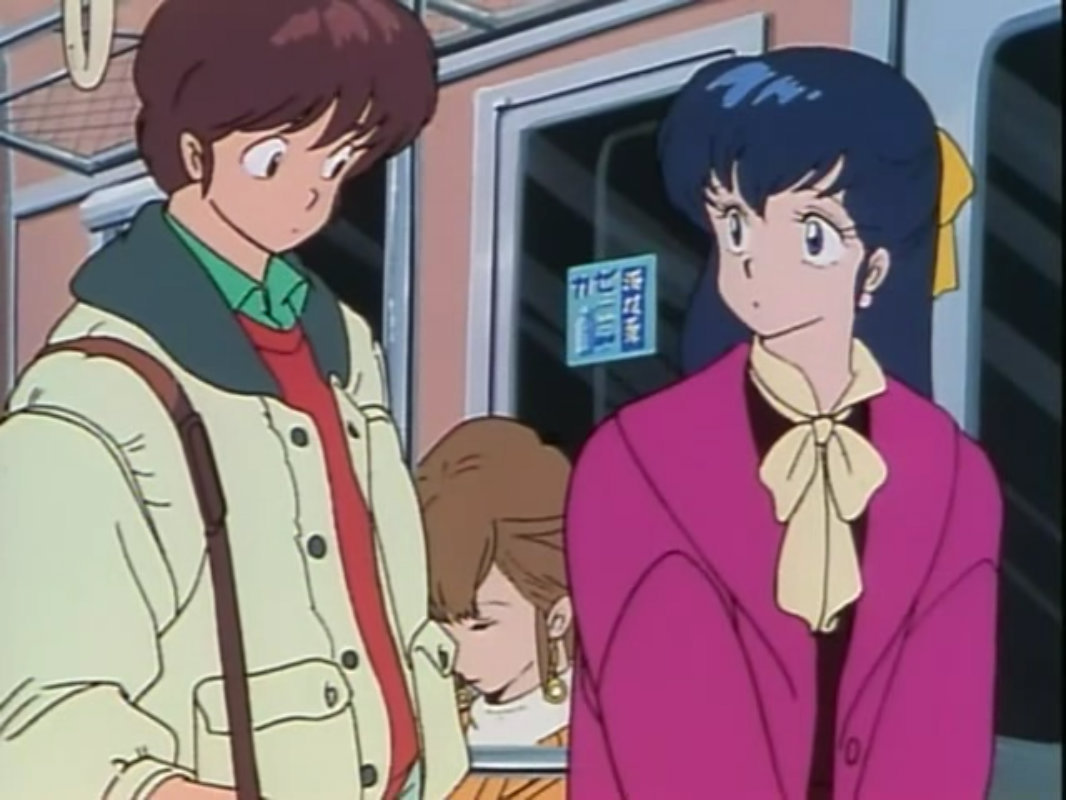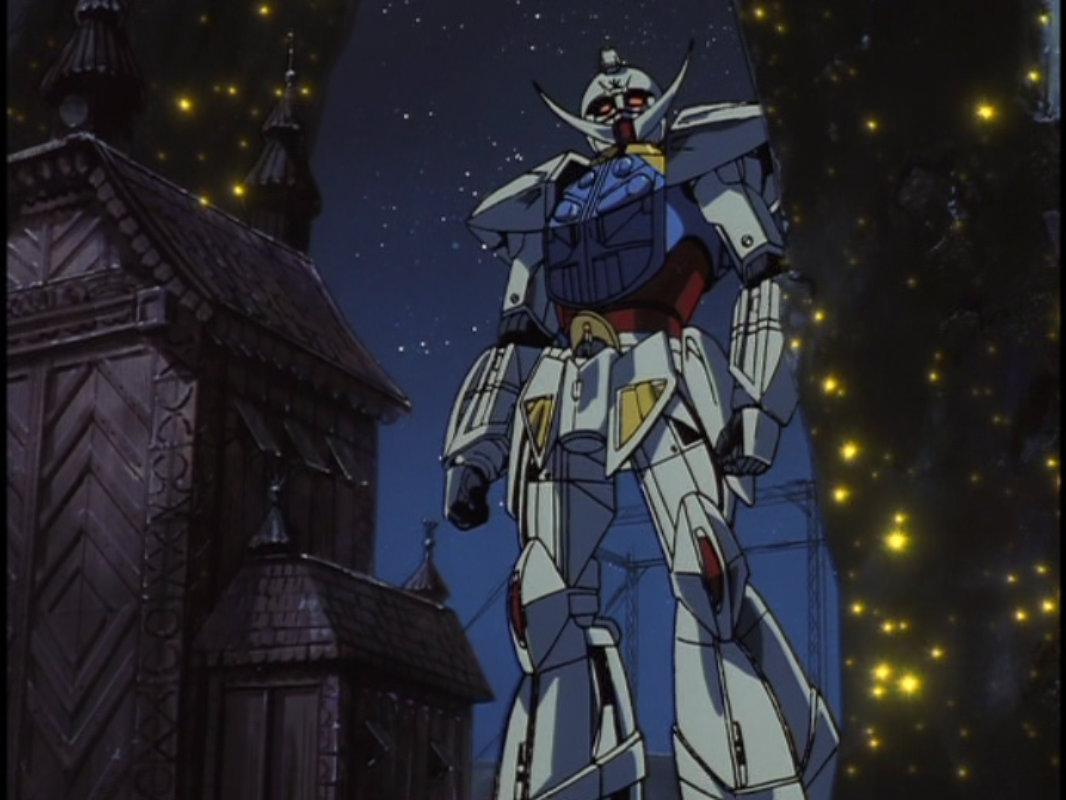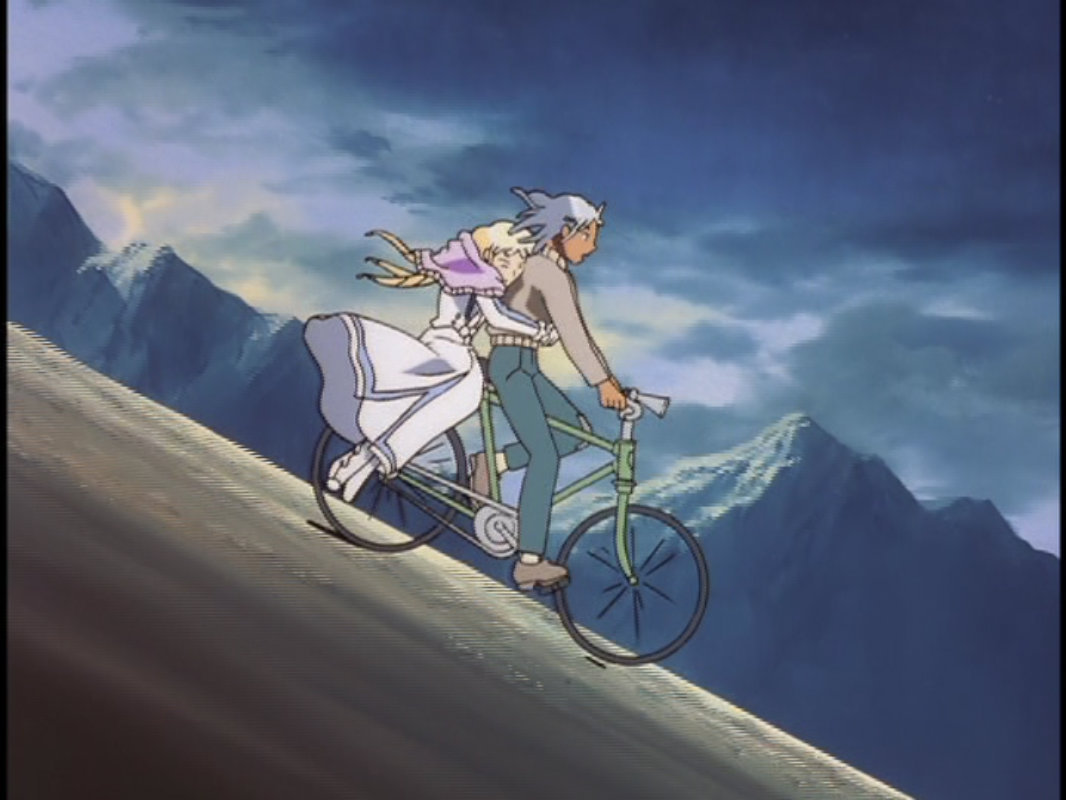Merry Christmas … er … Eve, everyone. To help celebrate the season and really kick off the end of this year’s blogging I thought what better way than to write about some Christmas related anime episodes. Now of course—as many big anime fans may already know, Christmas in Japan is a bit different from how the West celebrates it, with New Year’s being the bigger, more family oriented holiday and Christmas being a somewhat more intimate holiday for love. Because of that, anime has a lot of great romance related Christmas episodes, but they aren’t all about couples either, so don’t worry.
Now usually people do “top tens” or “best [blank] of all time” when they make lists, but honestly those are kind of dumb, if I can be so bold. So instead of saying my list is ”the” best, I think I’m just gonna say this is a list of some great episodes, and there's tons more out there as well. Who knows, maybe next year if it goes well I can do another.
So Merry Christmas, Happy Holidays, Have a great New Year’s, and without further ado, and in no particular order, let’s take a look at—
Seven Great Christmas Episodes!
Toradora! (episodes: 17 - 19)
Toradora! is a J.C. Staff anime from 2008 and in certain circles is considered one of the quintessential romance animes of its decade; and for good reason, as the show is an incredible ride to sit through. The basic premise follows its' cast and their tangled polygonal web of romances. Some end up well, while most seem to always fall apart, but that is true of first love for most people, huh? Ryuji Takasu a good hearted kid who is always mistaken for a delinquent because of his almost yakuza looks and Taiga Aisaka, the biggest bad ass in the school who just so happens to also be pint-sized and not look the part, are the characters at the forefront of the show. Together the two mismatched and misunderstood individuals end up in a bevy of drama, and perhaps the most well known of it all is none other than their Christmas themed story arc.
Honestly, because of that I don’t really want to delve too much into talking about it though, as it no doubt still makes people’s anime Christmas list every year since it aired. What finally accumulates in episode 19: Christmas Eve Party during the school’s … well, Christmas Eve party, is both incredibly touching and incredibly heart wrenching, and the emotions the characters go through will no doubt resonate with younger audiences.
There’s nothing else more to say, though, other than: if you haven’t seen Toradora! already, get on it.
Lupin the 3rd Part II/Red Jacket (episode: 64)
You can’t get anymore classic than Lupin, one of the original animated TV shows meant for an adult audience. The Lupin franchise has had quite a run on Japanese televisions over the last 4 and a half decades with a TV Special (made for TV movie) made every year since 1989, 5 TV shows, 7 movies, and 3 OVAs. It’s pretty easy to say people love this goofy womanizer who also happens to be a world class master thief, and his motley crew.
And in the second Lupin TV series’ 64th episode: Christmas at Tiffany’s, we finally get to see Lupin and company pull off a heist on Christmas. Being more or less coerced into it by the titular Jewelry Store owner and News-reporter Tiffany, Lupin and crew hafta rob a New York City Jeweler on live television. Can the greatest thief in the world pull off such a heist, or will all the cameras and broadcast finally be what Inspector Zenigata needs to catch him?
While Christmas at Tiffany’s is more or less an average episode of Lupin at best, that’s still makes it quite a good watch. With a clever trick to beat the cameras, and a good change of pace from the typical Christmas fare, this episode makes for a much needed break from the usual fluff this time of year. Besides when else do we get to see Lupin namedrop Jesus Christ?
Mobile Suit Gundam 0080: War in Pocket (All 6 episodes)
The original Tonami Promo in 2002 with voice-over narration by Peter Cullen, the voice of Optimus Prime.
Nowadays the Gundam franchise is no stranger to OVAs (Original Video Animation) but back in 1989 this was the first time it dabbled into this medium and simply knocked it out of the park here. I could really write an entire blog entry just on Gundam 0080 alone and still have things to say about it—it’s without a doubt one of the greatest OVAs in the series and also manages to be incredibly easy for new comers to get into; being one of the few Gundams that manages to make the intimidating Universal Century (or UC for short) timeline of the franchise new-comer friendly. Throw-in stellar animation, and fights that will just make your gut churn with dread and excitement at the same time, and you got yourself an absolutely fantastic 3 hours of material to watch.
As for the story, Gundam 0080 takes the focus away from the current frontline battles being fought and instead examines the everyday life of the people living during these times. The story is set near the very end of the One Year War, and thus is during Christmas season, making it almost Die Hard like. Beneath the exterior involves a plot that almost destroys an entire space colony, one of the first real positive looks the franchise has on a Zeon pilot, and an ending that is guaranteed to make anyone—even the coldest of hearts—cry.
Gundam 0080 should not be missed, and having the voice of Metal Gear Solid’s Snake as one of the main characters in the English dub is just an added bonus.
Himouto! Umaru-chan (episode: 8)
This was not a show I thought I would like as much as I did, but this year’s (2015) Himouto! Umaru-chan really won me over for much the same reason that it seems to have won over everyone else this year; its relaxed, slower pace made it easy-going viewing—almost completely stress-free, and adorable to boot. There’s just something real sincere about this story of an older brother trying to take care of his younger sister who acts like a model student in public but is in actuality a huge pop culture referencing spoiled brat, and in episode 8: Umaru and Christmas and New Year’s sees our dysfunctional family and friends trying to get through the holidays.
Different from most Christmas themed episodes however, this is a far more realistic and humble look at the holidays, as it involves coming home late from working overtime and just trying to make the best of what is left in the day. It’s a sweet look at a less than fortunate group of people who manage to somehow still make it all work, and is enough make you wanna say “d’aaahhh”.
Super Dimension Fortress: Macross (episodes: 35 - 36)
The original Super Dimension Fortress Macross from 1982 is a classic mecha love story, that’s just ridiculous enough to work. These last two episodes see the love triangle at the center of the characters’ relationships is finally put to an end as main character Hikaru has to asks himself this holiday season if he really wants to settle for illusions of a past forgotten, or if he wants to try something else. As the finale to the original Macross, these two episodes bring about equal amounts of action and emotions. By this point it becomes increasingly clear that the characters will never have their fairy tale endings, but that’s what makes it so great—the harsh, more realistic representation of broken relationships, and wanting to just go back to how things were again—even as impossible as it is—is something anyone can relate to. This was a great way to end a famous mecha show.
Magic Kaitou 1412 (episode: 12)
The Kaitou Kid series started humbly in 1987 before manga-ka (comic writer) Gosho Aoyoma had his first hit with Yaiba the following year, and then became a household name with his mega-franchise Detective Conan/Case Closed in 1994, which more or less took over his life, and probably prevents him from going back to writing more Kaitou Kid stories. Nowadays the Kid is best known for being a regular returning character in Detective Conan, and one of Conan’s greatest rivals—a genius compromise Aoyoma figured out so that he can work on both at the same time. But in 2014, Kaitou was able to somewhat break-free from just being a regular in Conan with his own TV show Magic Kaitou 1412 that sought to adapt (yet again) Kaitou’s standalone stories from his own manga, as well as mixing in some earlier seen cross-over cases from Detective Conan but this time told from Kaitou’s perspective, as a way to raise up the episode count.
The result is a pretty satisfying show for both old fans of Detective Conan and people who have no familiarity with the series, and in episode 12: Holy Night: Two Kaitou Kids! the show tackles … you guessed it, a Christmas episode. Much again like the Lupin the 3rd episode, this episode is more or less a standard Kaitou caper but told with some added Christmas flare. It’s a cute heist, with some nice Christmas season love between Kaitou and Inspector Nakamori, the man who has been itching to arrest Kaitou this whole time. What’s more not to love?
Maison Ikkoku (episodes: 39 - 40)
Maison Ikkoku is another hugely popular series from famous author Rumiko Takahashi (Urusei Yatsura, InuYasha), and while she has tackled many romance series before what sets this apart from a lot of her usual fare is that Maison Ikkoku happens to skewer a little bit older (being a seinen manga). This is a series that resonated a lot with me when I first saw it, and now happens to be one of my favorite romance animes, so I may be a bit bias when I say these two episodes might also be one of my favorite Christmas stories too.
These episodes follow Godai while he’s still attending University. Christmas is coming around the corner and so he ends up working himself to the bone doing multiple odd jobs in order to obtain presents for everyone, with big plans to surprise Kyoko that evening at their Apartment's get-together. This beginning is pretty typical, but a few lost belongings later, and things really start to get going. Earlier that day Godai tried to have a stone Kyoko owned identified by someone at his University. As it turns out the stone was the first and only present Kyoko got from her now deceased husband (a former geology teacher), and through some bad luck on the train line, Godai loses it. Already bummed out from being reminded of her previous love, Godai now has to deal with such an important item being missing, and ends up wasting almost the entire Christmas eve night trying to search every train he can that goes through the station for it.
As the Christmas hours dwindle away, and the snow keeps piling up on him outside, Godai finds himself exhausted, and through a series of misfortunate happenings all his hard work even blows up in his face when his present for Kyoko ends up missing as well. Eventually Godai finds himself asking what even is the point of any of this anymore, as Kyoko waits more and more at their get-together, worried about him. Although the night eventually improves, it was never the perfect day Godai wanted it to be, and worked so hard for. It’s an endeavor I think almost anyone can really relate to. Maison Ikkoku always had a great mix of melancholic lows and sincerely sweet highs for its awkward couple, and these two episodes really managed to have both all at once.





















